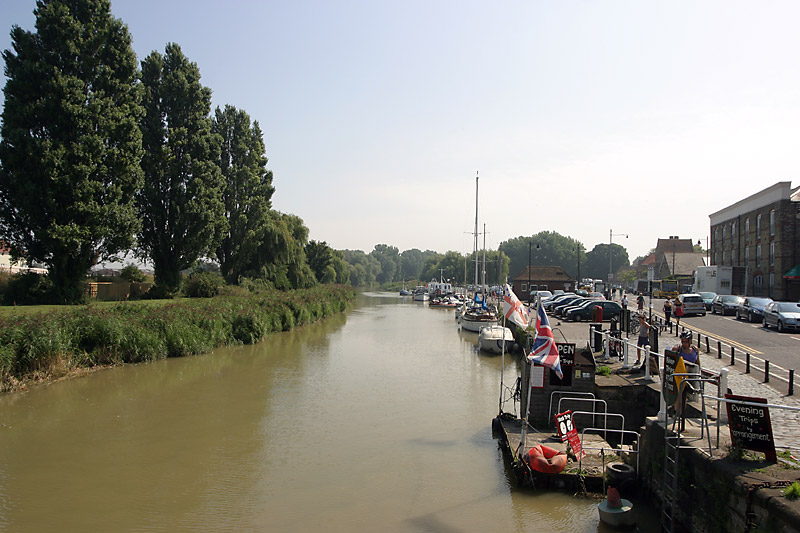Sandwich
Sandwich gets its name from the Old English 'sandwic' meaning sandplace. However, the name of this historic, riverside town made its name into the world's culinary repertoire by the habits of John Montagu, the Fourth Earl of Sandwich. A man too fond of gambling to stop to eat, it is said he preferred his meat between two slices of bread.
Sandwich gained importance in 1155 with the confederation of the Cinque Ports. In return for supplying the king's men and ships, these towns were given special priveleges which enabled them elements of self-government while a blind eye was turned towards smuggling. Over the centuries, the silting of the River Stour has removed Sandwich to a distance of two miles from the sea but its latter day importance is still evident in the wealth of historic buildings which remain.
Well worth a visit, the town has many fine, old, Tudor buildings and is lent much character from its retention of the geometric grid structure which was laid out in 1457 following a French raid. The first piece of period architecture is the old, stone King's Lodging on Strand Street. From here, head down one of the little alleys which will take you along a tour of the river and its working boats. On reaching the bridge you'll see the charming Barbican Gate, a fortification built by Henry VIII as protection against an attack by the French. Weather permitting, you'll also be able to book a river cruise here.
Anyone for a pint?
Whether you are here for the history or simply an afternoon pint, you'll be impressed by the three ancient inns behind the Barbican Gate. The Bell Hotel dates back to Tudor times and still features a Georgian dining room with its preserved musician gallery. You'll be standing in the footsteps of King Charles the Second who drank a glass of sack (wine) here in 1660. Nearby lies the Crispin Inn, named after the patron saint of shoemakers who was shipwrecked near Sandwich. Built in 1491, it was formerly the the home of a ferryman before being turned into an inn in 1769. The King's Arms opposite the church (originally called the Queen's Arms) is one of the towns oldest timber framed inns. It bears the carving of a cloven satyr, dated 1592 and bears the coat-of-arms of Elizabeth I, formed from a wrought iron fire-back. It's an idyllic spot for an afternoon drink or a spot of lunch by the riverside. Try the Fisherman's Wharf Restaurant, no not for the fish but for its eclectic selection of the town's speciality " more than half the menu is dedicated to sandwiches.
Sandwich gained importance in 1155 with the confederation of the Cinque Ports. In return for supplying the king's men and ships, these towns were given special priveleges which enabled them elements of self-government while a blind eye was turned towards smuggling. Over the centuries, the silting of the River Stour has removed Sandwich to a distance of two miles from the sea but its latter day importance is still evident in the wealth of historic buildings which remain.
Well worth a visit, the town has many fine, old, Tudor buildings and is lent much character from its retention of the geometric grid structure which was laid out in 1457 following a French raid. The first piece of period architecture is the old, stone King's Lodging on Strand Street. From here, head down one of the little alleys which will take you along a tour of the river and its working boats. On reaching the bridge you'll see the charming Barbican Gate, a fortification built by Henry VIII as protection against an attack by the French. Weather permitting, you'll also be able to book a river cruise here.
Anyone for a pint?
Whether you are here for the history or simply an afternoon pint, you'll be impressed by the three ancient inns behind the Barbican Gate. The Bell Hotel dates back to Tudor times and still features a Georgian dining room with its preserved musician gallery. You'll be standing in the footsteps of King Charles the Second who drank a glass of sack (wine) here in 1660. Nearby lies the Crispin Inn, named after the patron saint of shoemakers who was shipwrecked near Sandwich. Built in 1491, it was formerly the the home of a ferryman before being turned into an inn in 1769. The King's Arms opposite the church (originally called the Queen's Arms) is one of the towns oldest timber framed inns. It bears the carving of a cloven satyr, dated 1592 and bears the coat-of-arms of Elizabeth I, formed from a wrought iron fire-back. It's an idyllic spot for an afternoon drink or a spot of lunch by the riverside. Try the Fisherman's Wharf Restaurant, no not for the fish but for its eclectic selection of the town's speciality " more than half the menu is dedicated to sandwiches.
